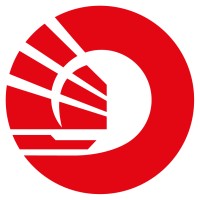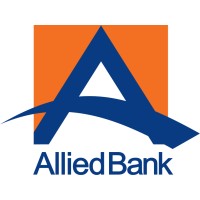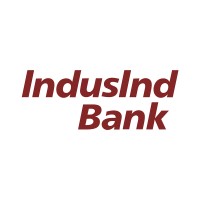
Banco Pichincha Company Cyber Security Posture
pichincha.comEn Banco Pichincha estamos conscientes que hay nuevas maneras de ver el mundo; por eso, queremos aprovechar nuestra posición de liderazgo en Ecuador, avalada por 118 años de historia, para acercar a nuestros clientes las oportunidades que brinda la nueva era en que vivimos. Formamos parte del Grupo Pichincha con presencia, también, en Perú, Colombia, España, Estados Unidos y Panamá. El grupo financiero favorece la diversidad e impulsa la inclusión en el diseño de los servicios que ofrece a sus clientes. Es flexible a los cambios que demanda un entorno más global y competitivo con el propósito de generar valor para sus públicos de interés. Hemos asumido el desafío de evolucionar hacia un modelo de banca con presencia internacional, moderna y ágil, sin perder la solidez y confianza a nivel local. Cada uno de nuestros más de 10.000 colaboradores en los seis países en los que estamos presentes son fundamentales para abrirnos a los nuevos retos del mercado que exige nuevas maneras de hacer las cosas. La sostenibilidad y la responsabilidad social corporativa son pilares fundamentales de nuestro modelo de negocio. Este compromiso que busca propiciar un impacto positivo y justo en la sociedad nos ha valido el reconocimiento de diferentes entidades y organismos latinoamericanos y europeos.
Banco Pichincha Company Details
banco-pichincha-ca
6910 employees
256743
522
Banking
pichincha.com
Scan still pending
BAN_2368172
In-progress
Between 800 and 900
This score is AI-generated and less favored by cyber insurers, who prefer the TPRM score.
 Banco Pichincha Global Score
Banco Pichincha Global Score.png)

Banco Pichincha Company Scoring based on AI Models
| Model Name | Date | Description | Current Score Difference | Score |
|---|---|---|---|---|
| AVERAGE-Industry | 03-12-2025 | This score represents the average cybersecurity rating of companies already scanned within the same industry. It provides a benchmark to compare an individual company's security posture against its industry peers. | N/A | Between 800 and 900 |
Banco Pichincha Company Cyber Security News & History
| Entity | Type | Severity | Impact | Seen | Url ID | Details | View |
|---|---|---|---|---|---|---|---|
| Banco Pichincha | Cyber Attack | 60 | 2 | 10/2021 | BAN1715241122 | Link | |
Rankiteo Explanation : Attack limited on finance or reputationDescription: Ecuador's largest private bank Banco Pichincha has suffered a cyberattack that disrupted operations and taken the ATM and online banking portal offline. The bank has experienced significant interruption as a result of the system shutdown, with ATMs no longer functioning and maintenance notices shown on the online banking portals. Employees were informed in an internal message issued to the Bank's agencies and viewed by Bleeping Computer that self-services, email, digital channels, and bank applications won't be available owing to a technical problem. They reiterate commitment to safeguard the interests of clients and restore normal care through digital channels in the shortest possible time. | |||||||
Banco Pichincha Company Subsidiaries

En Banco Pichincha estamos conscientes que hay nuevas maneras de ver el mundo; por eso, queremos aprovechar nuestra posición de liderazgo en Ecuador, avalada por 118 años de historia, para acercar a nuestros clientes las oportunidades que brinda la nueva era en que vivimos. Formamos parte del Grupo Pichincha con presencia, también, en Perú, Colombia, España, Estados Unidos y Panamá. El grupo financiero favorece la diversidad e impulsa la inclusión en el diseño de los servicios que ofrece a sus clientes. Es flexible a los cambios que demanda un entorno más global y competitivo con el propósito de generar valor para sus públicos de interés. Hemos asumido el desafío de evolucionar hacia un modelo de banca con presencia internacional, moderna y ágil, sin perder la solidez y confianza a nivel local. Cada uno de nuestros más de 10.000 colaboradores en los seis países en los que estamos presentes son fundamentales para abrirnos a los nuevos retos del mercado que exige nuevas maneras de hacer las cosas. La sostenibilidad y la responsabilidad social corporativa son pilares fundamentales de nuestro modelo de negocio. Este compromiso que busca propiciar un impacto positivo y justo en la sociedad nos ha valido el reconocimiento de diferentes entidades y organismos latinoamericanos y europeos.
Access Data Using Our API

Get company history
.png)
Banco Pichincha Cyber Security News
Cybersecurity News: OpenSSH flaws enable new attacks, Microsoft prepares for deprecation, Zwipe files for bankruptcy
Two security vulnerabilities have been discovered in OpenSSH that could enable man-in-the-middle (MitM) attacks and denial-of-service (DoS) ...
Cyberattack shuts down Ecuador's largest bank, Banco Pichincha
Ecuador's largest private bank Banco Pichincha has suffered a cyberattack that disrupted operations and taken the ATM and online banking portal ...
Ecuador's legislature says hackers attempted to access confidential information
Earlier this week, Ecuador's Radio Pichincha reported that its systems were attacked by the hacker group Cyber Hunters, temporarily disrupting ...
Bank with most users in Ecuador reports cybernetic problems
Banco Pichincha, the largest of its kind in Ecuador, reported cyber problems on Monday and thousands of users have been unable to access their accounts.
Leading life insurance companies in the cybersecurity theme
GlobalData uncovers the top ranked life insurance companies in the cybersecurity theme.
News - Ecuador’s National Assembly Targeted in Cyberattack
With Ecuador's runoff election approaching, concerns are growing over the potential for further cyber interference. Authorities are reinforcing ...
Highlights from a journey to support women entrepreneurs
Mastercard reaches milestone as it works to provide solutions for women-owned small businesses.
Miami-based Doroni Aerospace is developing an eVTOL flying car
INNOVATION. What Traffic? Miami-based electric vehicle takeoff and landing (eVTOL) company Doroni Aerospace is developing an eVTOL flying ...

Banco Pichincha Similar Companies

OCBC
OCBC is the longest established Singapore bank, formed in 1932 from the merger of three local banks, the oldest of which was founded in 1912. It is now the second largest financial services group in Southeast Asia by assets and one of the world’s most highly-rated banks, with an Aa1 rating from Mood

Nordea
We are a universal bank with a 200-year history of supporting and growing the Nordic economies – enabling dreams and aspirations for a greater good. Every day, we work to support our customers’ financial development, delivering best-in-class omnichannel customer experiences and driving sustainable c

VietinBank
GENERAL INFORMATION Registered name in Vietnamese: NGÂN HÀNG THƯƠNG MẠI CỔ PHẦN CÔNG THƯƠNG VIỆT NAM Registered name in English: VIETNAM JOINT STOCK COMMERCIAL BANK FOR INDUSTRY AND TRADE Trading name: VietinBank Banking License: No. 142/GP-NHNN dated 3rd July 2009 by the State Bank o

Allied Bank Limited
Allied Bank is one of Pakistan's leading banks, with a vision to become a dynamic and efficient institution providing integrated solutions, aiming to be the first choice for customers. Currently, the bank maintains a country-wide network of over 1,400 branches and more than 1,560 ATMs. To protect y

IndusInd Bank
IndusInd Bank, which commenced operations in 1994, caters to the needs of both consumer and corporate customers. Its technology platform supports multi-channel delivery capabilities. As on March 31, 2022, IndusInd Bank has 2,265 Branches / Banking Outlet and 2,767 ATMs spread across 776 geographical

Banco de la Provincia de Buenos Aires
Desde 1822 somos el banco impulsor del desarrollo de la Provincia de Buenos Aires y su gente, invirtiendo en talento y creando valor para nuestros casi 5 millones de clientes. Con más de 400 localizaciones distribuidas entre la Ciudad Autónoma y la Provincia de Buenos Aires y la Banca Internet Pr

Frequently Asked Questions (FAQ) on Cybersecurity Incidents
Banco Pichincha CyberSecurity History Information
Total Incidents: According to Rankiteo, Banco Pichincha has faced 1 incidents in the past.
Incident Types: The types of cybersecurity incidents that have occurred include ['Cyber Attack'].
Total Financial Loss: The total financial loss from these incidents is estimated to be {total_financial_loss}.
Cybersecurity Posture: The company's overall cybersecurity posture is described as En Banco Pichincha estamos conscientes que hay nuevas maneras de ver el mundo; por eso, queremos aprovechar nuestra posición de liderazgo en Ecuador, avalada por 118 años de historia, para acercar a nuestros clientes las oportunidades que brinda la nueva era en que vivimos. Formamos parte del Grupo Pichincha con presencia, también, en Perú, Colombia, España, Estados Unidos y Panamá. El grupo financiero favorece la diversidad e impulsa la inclusión en el diseño de los servicios que ofrece a sus clientes. Es flexible a los cambios que demanda un entorno más global y competitivo con el propósito de generar valor para sus públicos de interés. Hemos asumido el desafío de evolucionar hacia un modelo de banca con presencia internacional, moderna y ágil, sin perder la solidez y confianza a nivel local. Cada uno de nuestros más de 10.000 colaboradores en los seis países en los que estamos presentes son fundamentales para abrirnos a los nuevos retos del mercado que exige nuevas maneras de hacer las cosas. La sostenibilidad y la responsabilidad social corporativa son pilares fundamentales de nuestro modelo de negocio. Este compromiso que busca propiciar un impacto positivo y justo en la sociedad nos ha valido el reconocimiento de diferentes entidades y organismos latinoamericanos y europeos..
Detection and Response: The company detects and responds to cybersecurity incidents through {description_of_detection_and_response_process}.
Incident Details
Incident 1: Ransomware Attack
Title: {Incident_Title}
Description: {Brief_description_of_the_incident}
Date Detected: {Detection_Date}
Date Publicly Disclosed: {Disclosure_Date}
Date Resolved: {Resolution_Date}
Type: {Type_of_Attack}
Attack Vector: {Attack_Vector}
Vulnerability Exploited: {Vulnerability}
Threat Actor: {Threat_Actor}
Motivation: {Motivation}
Incident 2: Data Breach
Title: {Incident_Title}
Description: {Brief_description_of_the_incident}
Date Detected: {Detection_Date}
Date Publicly Disclosed: {Disclosure_Date}
Date Resolved: {Resolution_Date}
Type: {Type_of_Attack}
Attack Vector: {Attack_Vector}
Vulnerability Exploited: {Vulnerability}
Threat Actor: {Threat_Actor}
Motivation: {Motivation}
Common Attack Types: As of now, the company has not encountered any reported incidents involving common cyberattacks.
Identification of Attack Vectors: The company identifies the attack vectors used in incidents through {description_of_identification_process}.
Impact of the Incidents
Incident 1: Ransomware Attack
Financial Loss: {Financial_Loss}
Data Compromised: {Data_Compromised}
Systems Affected: {Systems_Affected}
Downtime: {Downtime}
Operational Impact: {Operational_Impact}
Conversion Rate Impact: {Conversion_Rate_Impact}
Revenue Loss: {Revenue_Loss}
Customer Complaints: {Customer_Complaints}
Brand Reputation Impact: {Brand_Reputation_Impact}
Legal Liabilities: {Legal_Liabilities}
Identity Theft Risk: {Identity_Theft_Risk}
Payment Information Risk: {Payment_Information_Risk}
Incident 2: Data Breach
Financial Loss: {Financial_Loss}
Data Compromised: {Data_Compromised}
Systems Affected: {Systems_Affected}
Downtime: {Downtime}
Operational Impact: {Operational_Impact}
Conversion Rate Impact: {Conversion_Rate_Impact}
Revenue Loss: {Revenue_Loss}
Customer Complaints: {Customer_Complaints}
Brand Reputation Impact: {Brand_Reputation_Impact}
Legal Liabilities: {Legal_Liabilities}
Identity Theft Risk: {Identity_Theft_Risk}
Payment Information Risk: {Payment_Information_Risk}
Average Financial Loss: The average financial loss per incident is {average_financial_loss}.
Commonly Compromised Data Types: The types of data most commonly compromised in incidents are {list_of_commonly_compromised_data_types}.
Incident 1: Ransomware Attack
Entity Name: {Entity_Name}
Entity Type: {Entity_Type}
Industry: {Industry}
Location: {Location}
Size: {Size}
Customers Affected: {Customers_Affected}
Incident 2: Data Breach
Entity Name: {Entity_Name}
Entity Type: {Entity_Type}
Industry: {Industry}
Location: {Location}
Size: {Size}
Customers Affected: {Customers_Affected}
Response to the Incidents
Incident 1: Ransomware Attack
Incident Response Plan Activated: {Yes/No}
Third Party Assistance: {Yes/No}
Law Enforcement Notified: {Yes/No}
Containment Measures: {Containment_Measures}
Remediation Measures: {Remediation_Measures}
Recovery Measures: {Recovery_Measures}
Communication Strategy: {Communication_Strategy}
Adaptive Behavioral WAF: {Adaptive_Behavioral_WAF}
On-Demand Scrubbing Services: {On_Demand_Scrubbing_Services}
Network Segmentation: {Network_Segmentation}
Enhanced Monitoring: {Enhanced_Monitoring}
Incident 2: Data Breach
Incident Response Plan Activated: {Yes/No}
Third Party Assistance: {Yes/No}
Law Enforcement Notified: {Yes/No}
Containment Measures: {Containment_Measures}
Remediation Measures: {Remediation_Measures}
Recovery Measures: {Recovery_Measures}
Communication Strategy: {Communication_Strategy}
Adaptive Behavioral WAF: {Adaptive_Behavioral_WAF}
On-Demand Scrubbing Services: {On_Demand_Scrubbing_Services}
Network Segmentation: {Network_Segmentation}
Enhanced Monitoring: {Enhanced_Monitoring}
Incident Response Plan: The company's incident response plan is described as {description_of_incident_response_plan}.
Third-Party Assistance: The company involves third-party assistance in incident response through {description_of_third_party_involvement}.
Data Breach Information
Incident 2: Data Breach
Type of Data Compromised: {Type_of_Data}
Number of Records Exposed: {Number_of_Records}
Sensitivity of Data: {Sensitivity_of_Data}
Data Exfiltration: {Yes/No}
Data Encryption: {Yes/No}
File Types Exposed: {File_Types}
Personally Identifiable Information: {Yes/No}
Prevention of Data Exfiltration: The company takes the following measures to prevent data exfiltration: {description_of_prevention_measures}.
Handling of PII Incidents: The company handles incidents involving personally identifiable information (PII) through {description_of_handling_process}.
Ransomware Information
Incident 1: Ransomware Attack
Ransom Demanded: {Ransom_Amount}
Ransom Paid: {Ransom_Paid}
Ransomware Strain: {Ransomware_Strain}
Data Encryption: {Yes/No}
Data Exfiltration: {Yes/No}
Ransom Payment Policy: The company's policy on paying ransoms in ransomware incidents is described as {description_of_ransom_payment_policy}.
Data Recovery from Ransomware: The company recovers data encrypted by ransomware through {description_of_data_recovery_process}.
Regulatory Compliance
Incident 1: Ransomware Attack
Regulations Violated: {Regulations_Violated}
Fines Imposed: {Fines_Imposed}
Legal Actions: {Legal_Actions}
Regulatory Notifications: {Regulatory_Notifications}
Incident 2: Data Breach
Regulations Violated: {Regulations_Violated}
Fines Imposed: {Fines_Imposed}
Legal Actions: {Legal_Actions}
Regulatory Notifications: {Regulatory_Notifications}
Regulatory Frameworks: The company complies with the following regulatory frameworks regarding cybersecurity: {list_of_regulatory_frameworks}.
Ensuring Regulatory Compliance: The company ensures compliance with regulatory requirements through {description_of_compliance_measures}.
Lessons Learned and Recommendations
Incident 1: Ransomware Attack
Lessons Learned: {Lessons_Learned}
Incident 2: Data Breach
Lessons Learned: {Lessons_Learned}
Incident 1: Ransomware Attack
Recommendations: {Recommendations}
Incident 2: Data Breach
Recommendations: {Recommendations}
Key Lessons Learned: The key lessons learned from past incidents are {list_of_key_lessons_learned}.
Implemented Recommendations: The company has implemented the following recommendations to improve cybersecurity: {list_of_implemented_recommendations}.
References
Additional Resources: Stakeholders can find additional resources on cybersecurity best practices at {list_of_additional_resources}.
Investigation Status
Incident 1: Ransomware Attack
Investigation Status: {Investigation_Status}
Incident 2: Data Breach
Investigation Status: {Investigation_Status}
Communication of Investigation Status: The company communicates the status of incident investigations to stakeholders through {description_of_communication_process}.
Stakeholder and Customer Advisories
Incident 1: Ransomware Attack
Stakeholder Advisories: {Stakeholder_Advisories}
Customer Advisories: {Customer_Advisories}
Incident 2: Data Breach
Stakeholder Advisories: {Stakeholder_Advisories}
Customer Advisories: {Customer_Advisories}
Advisories Provided: The company provides the following advisories to stakeholders and customers following an incident: {description_of_advisories_provided}.
Initial Access Broker
Incident 1: Ransomware Attack
Entry Point: {Entry_Point}
Reconnaissance Period: {Reconnaissance_Period}
Backdoors Established: {Backdoors_Established}
High Value Targets: {High_Value_Targets}
Data Sold on Dark Web: {Yes/No}
Incident 2: Data Breach
Entry Point: {Entry_Point}
Reconnaissance Period: {Reconnaissance_Period}
Backdoors Established: {Backdoors_Established}
High Value Targets: {High_Value_Targets}
Data Sold on Dark Web: {Yes/No}
Monitoring and Mitigation of Initial Access Brokers: The company monitors and mitigates the activities of initial access brokers through {description_of_monitoring_and_mitigation_measures}.
Post-Incident Analysis
Incident 1: Ransomware Attack
Root Causes: {Root_Causes}
Corrective Actions: {Corrective_Actions}
Incident 2: Data Breach
Root Causes: {Root_Causes}
Corrective Actions: {Corrective_Actions}
Post-Incident Analysis Process: The company's process for conducting post-incident analysis is described as {description_of_post_incident_analysis_process}.
Corrective Actions Taken: The company has taken the following corrective actions based on post-incident analysis: {list_of_corrective_actions_taken}.
Additional Questions
General Information
Ransom Payment History: The company has {paid/not_paid} ransoms in the past.
Last Ransom Demanded: The amount of the last ransom demanded was {last_ransom_amount}.
Last Attacking Group: The attacking group in the last incident was {last_attacking_group}.
Incident Details
Most Recent Incident Detected: The most recent incident detected was on {most_recent_incident_detected_date}.
Most Recent Incident Publicly Disclosed: The most recent incident publicly disclosed was on {most_recent_incident_publicly_disclosed_date}.
Most Recent Incident Resolved: The most recent incident resolved was on {most_recent_incident_resolved_date}.
Impact of the Incidents
Highest Financial Loss: The highest financial loss from an incident was {highest_financial_loss}.
Most Significant Data Compromised: The most significant data compromised in an incident was {most_significant_data_compromised}.
Most Significant System Affected: The most significant system affected in an incident was {most_significant_system_affected}.
Response to the Incidents
Third-Party Assistance in Most Recent Incident: The third-party assistance involved in the most recent incident was {third_party_assistance_in_most_recent_incident}.
Containment Measures in Most Recent Incident: The containment measures taken in the most recent incident were {containment_measures_in_most_recent_incident}.
Data Breach Information
Most Sensitive Data Compromised: The most sensitive data compromised in a breach was {most_sensitive_data_compromised}.
Number of Records Exposed: The number of records exposed in the most significant breach was {number_of_records_exposed}.
Ransomware Information
Highest Ransom Demanded: The highest ransom demanded in a ransomware incident was {highest_ransom_demanded}.
Highest Ransom Paid: The highest ransom paid in a ransomware incident was {highest_ransom_paid}.
Regulatory Compliance
Highest Fine Imposed: The highest fine imposed for a regulatory violation was {highest_fine_imposed}.
Most Significant Legal Action: The most significant legal action taken for a regulatory violation was {most_significant_legal_action}.
Lessons Learned and Recommendations
Most Significant Lesson Learned: The most significant lesson learned from past incidents was {most_significant_lesson_learned}.
Most Significant Recommendation Implemented: The most significant recommendation implemented to improve cybersecurity was {most_significant_recommendation_implemented}.
References
Most Recent Source: The most recent source of information about an incident is {most_recent_source}.
Most Recent URL for Additional Resources: The most recent URL for additional resources on cybersecurity best practices is {most_recent_url}.
Investigation Status
Current Status of Most Recent Investigation: The current status of the most recent investigation is {current_status_of_most_recent_investigation}.
Stakeholder and Customer Advisories
Most Recent Stakeholder Advisory: The most recent stakeholder advisory issued was {most_recent_stakeholder_advisory}.
Most Recent Customer Advisory: The most recent customer advisory issued was {most_recent_customer_advisory}.
Initial Access Broker
Most Recent Entry Point: The most recent entry point used by an initial access broker was {most_recent_entry_point}.
Most Recent Reconnaissance Period: The most recent reconnaissance period for an incident was {most_recent_reconnaissance_period}.
Post-Incident Analysis
Most Significant Root Cause: The most significant root cause identified in post-incident analysis was {most_significant_root_cause}.
Most Significant Corrective Action: The most significant corrective action taken based on post-incident analysis was {most_significant_corrective_action}.
What Do We Measure?
















Every week, Rankiteo analyzes billions of signals to give organizations a sharper, faster view of emerging risks. With deeper, more actionable intelligence at their fingertips, security teams can outpace threat actors, respond instantly to Zero-Day attacks, and dramatically shrink their risk exposure window.
These are some of the factors we use to calculate the overall score:
Identify exposed access points, detect misconfigured SSL certificates, and uncover vulnerabilities across the network infrastructure.
Gain visibility into the software components used within an organization to detect vulnerabilities, manage risk, and ensure supply chain security.
Monitor and manage all IT assets and their configurations to ensure accurate, real-time visibility across the company's technology environment.
Leverage real-time insights on active threats, malware campaigns, and emerging vulnerabilities to proactively defend against evolving cyberattacks.




